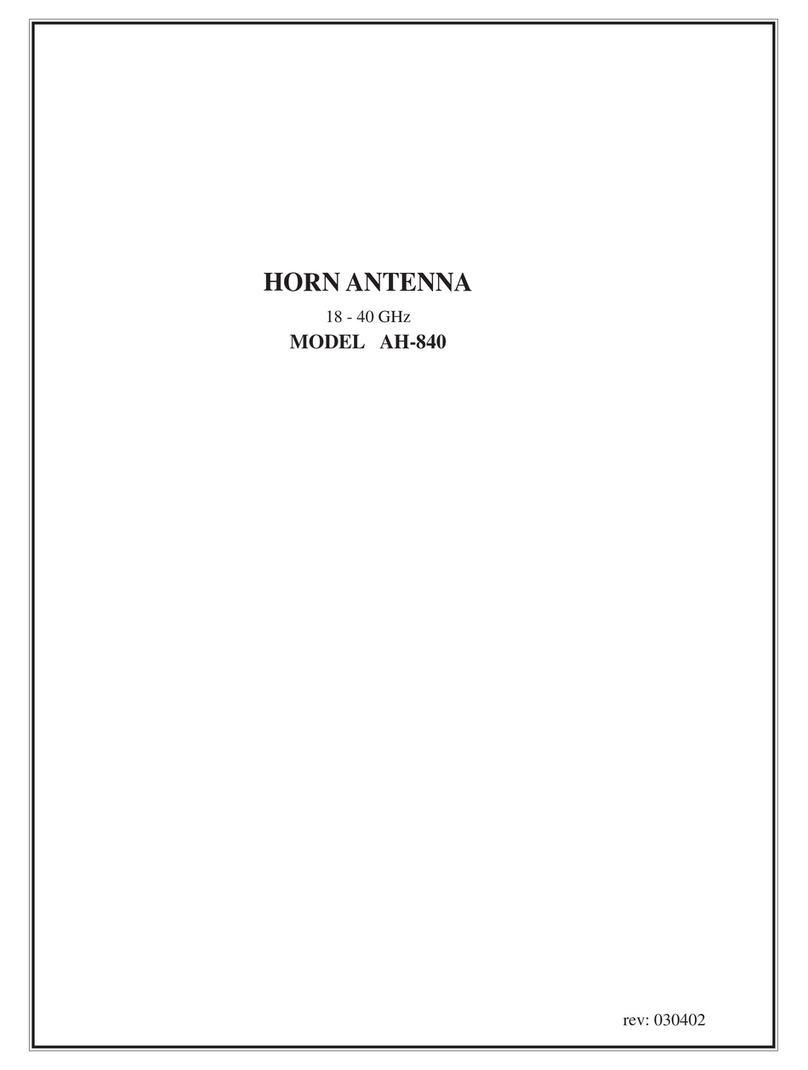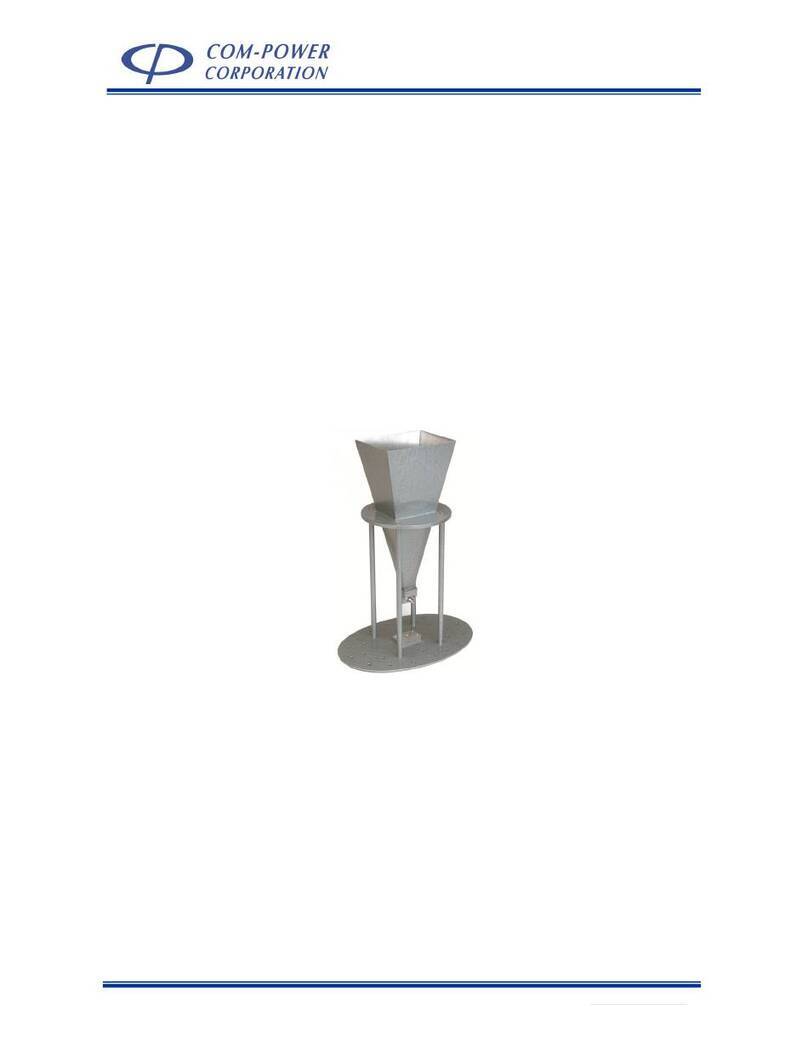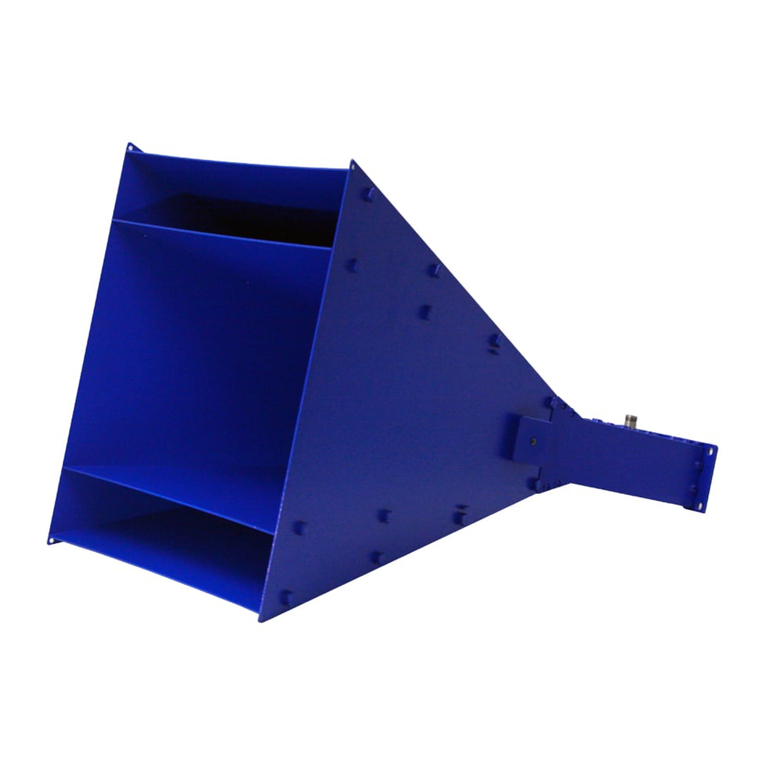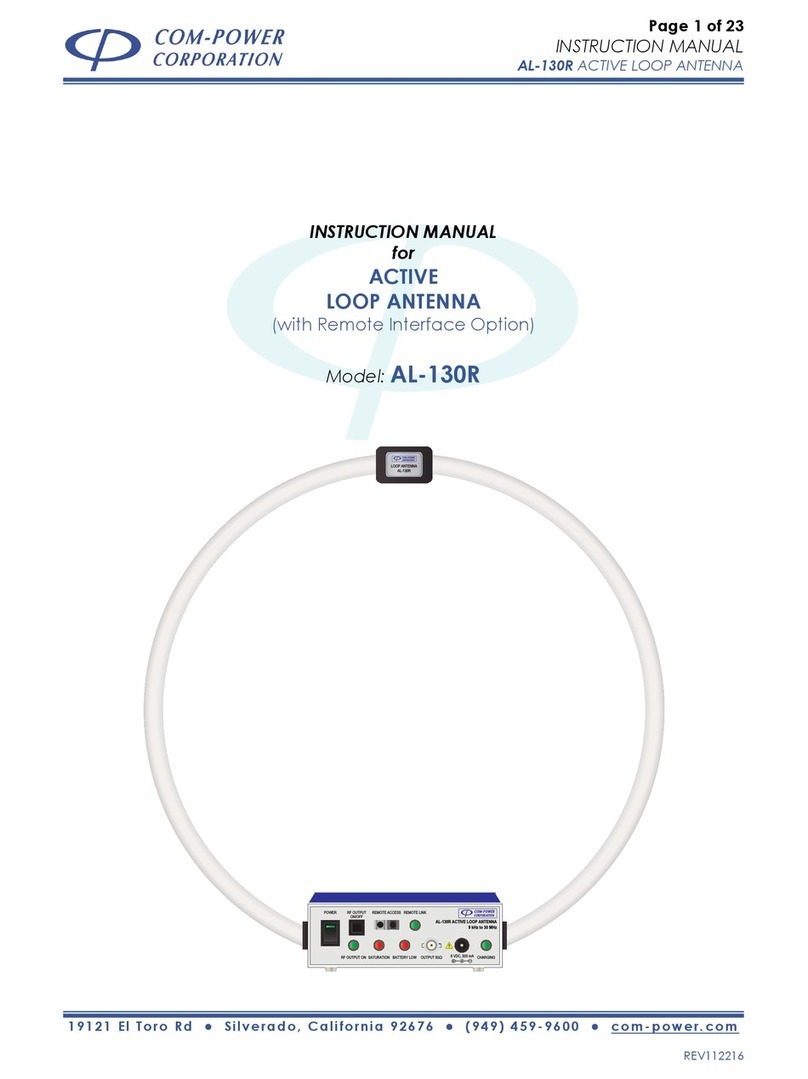
Page 2 of 26
INSTRUCTION MANUAL
AL-RE101 LOOP ANTENNA
- TABLE OF CONTENTS -
19121 El Toro Rd ●Silverado, California 92676 ●(949) 459-9600 ●com-power.com
Rev101617
Table of Contents
1.0 Introduction ........................................................................................................... 4
2.0 Products Available from Com-Power ................................................................. 5
3.0 Product Information .............................................................................................. 6
3.1 Incoming Inspection............................................................................................................... 6
3.2 Package Inventory ................................................................................................................. 6
3.3 Product Features ..................................................................................................................... 7
3.4 Product Specifications............................................................................................................ 8
4.0 Using Your AL-RE101 Loop Antenna .................................................................... 9
4.1 Antenna Conversion Factors................................................................................................ 10
4.1.1 Interpolation of Antenna Conversion Factors ........................................................... 12
5.0 Antenna Theory................................................................................................... 13
5.1 Open Circuit Antenna Terminal Voltage vs Flux Density ................................................... 13
5.2 Determination of Antenna Conversion Factors .................................................................. 15
5.2.1 Derivation of Antenna Conversion Factor Equation ................................................ 17
6.0 Calibration and Calibration Cycle.................................................................... 19
6.1 Calibration Equipment.......................................................................................................... 19
6.1.1 Source Equipment.......................................................................................................... 20
6.1.2 Measuring Instruments ................................................................................................... 20
6.1.3 Transmitting Loop Antenna........................................................................................... 20
6.1.4 Precision 1-ohm Series Resistor ..................................................................................... 20
6.1.5 RF Current Probe ............................................................................................................ 20
6.2 Interpretation of Standards................................................................................................... 21
6.3 Calibration Methodology ..................................................................................................... 22
7.0 Warranty............................................................................................................... 24
8.0 Maintenance....................................................................................................... 25
9.0 Typical Performance Data ................................................................................. 26
































